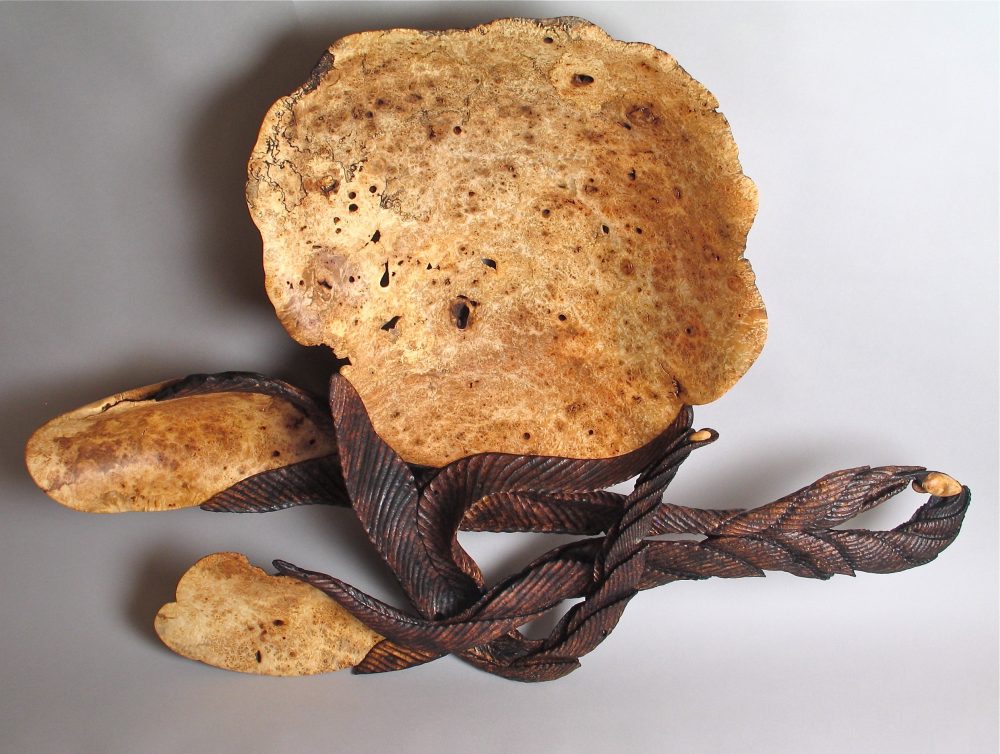Vermont Spoons
Title: Vermont Spoons
Artist: Michelle Holzapfel, US
Nationality: US
Date: 2010
Materials: Maple Burl - carved, burned and gilded
Dimensions: 42 x 36 x 6
Price: $12,000
Read More
Credit Line: Photo by David Holzapfel
Object ID Number: 2016FFMH2
Object Number: 2016FFMH2
Notes: I was approached by the Bennington Museum (Bennington, Vermont) to contribute a piece for its 2010 “State of Craft” exhibition. I wanted to make a large and complex form and I knew just the piece of wood to use: a large maple root-burl harvested from a residence in West Brattleboro, less than 10 miles away. Vermont Spoons was conceived as a nest of spoons sprouting from deeply-veined telescoping leaf-stems. The contours were strongly suggested by the multiple-lobed forms of the burl as it grew. I refer to this working style as ‘bespoke’ carving—when the form is tailored to the unique contours of the wood, yielding a solution that lets the wood wear itself. Subtractive carving The chain-saw carver is a tailor-butcher-diagnostician-gemologist who heeds the formal cues latent in the wood. I’ve developed strategies to ‘tailor’ the vessel to the idiosyncrasies of the burl. This form was roughed out first with a chain saw, then refined with pneumatic grinders and sanders. The interior was sanded with multiple grades of abrasives, coarse to fine. The ‘stems’ were burned with a propane torch and wood-burning tool. The stem-tip ‘buds’ were gilded. The finish is linseed oil-based. On Work I transmute these idiosyncrasies from obstacle to vehicle through work: I clarify the potential forms in my mind, on paper, and with tools in hand. My role is as much scribe as sculptor. I preserve the accent of the species and the growth-story of the tree. This form cross-references ceramic’s plasticity, armour’s acuity and vegetative growth. How the piece shares its space with you, the viewer—defines its gravity, longevity and levity. In an artisan’s life, struggle is central, yet disguised. I do violence to the wood, wear-and-tear on my joints, wrest my viewers’ attention, and strive to survive in a harsh commercial age. But when these forces are focused—and skill serves intention—a small, temporary truce may be won.
